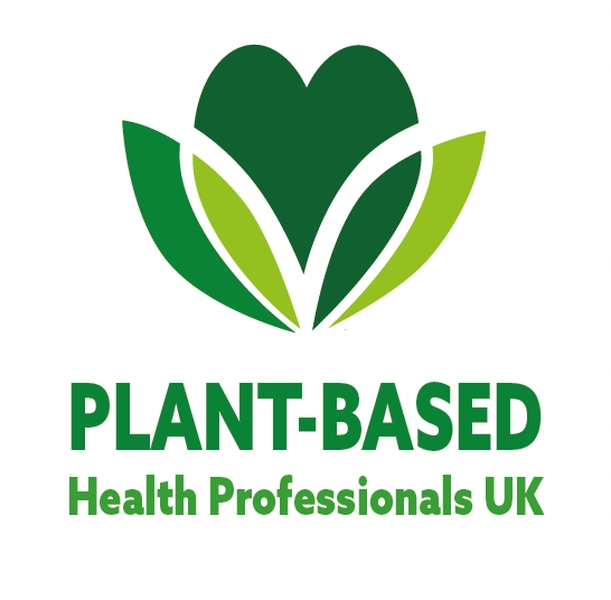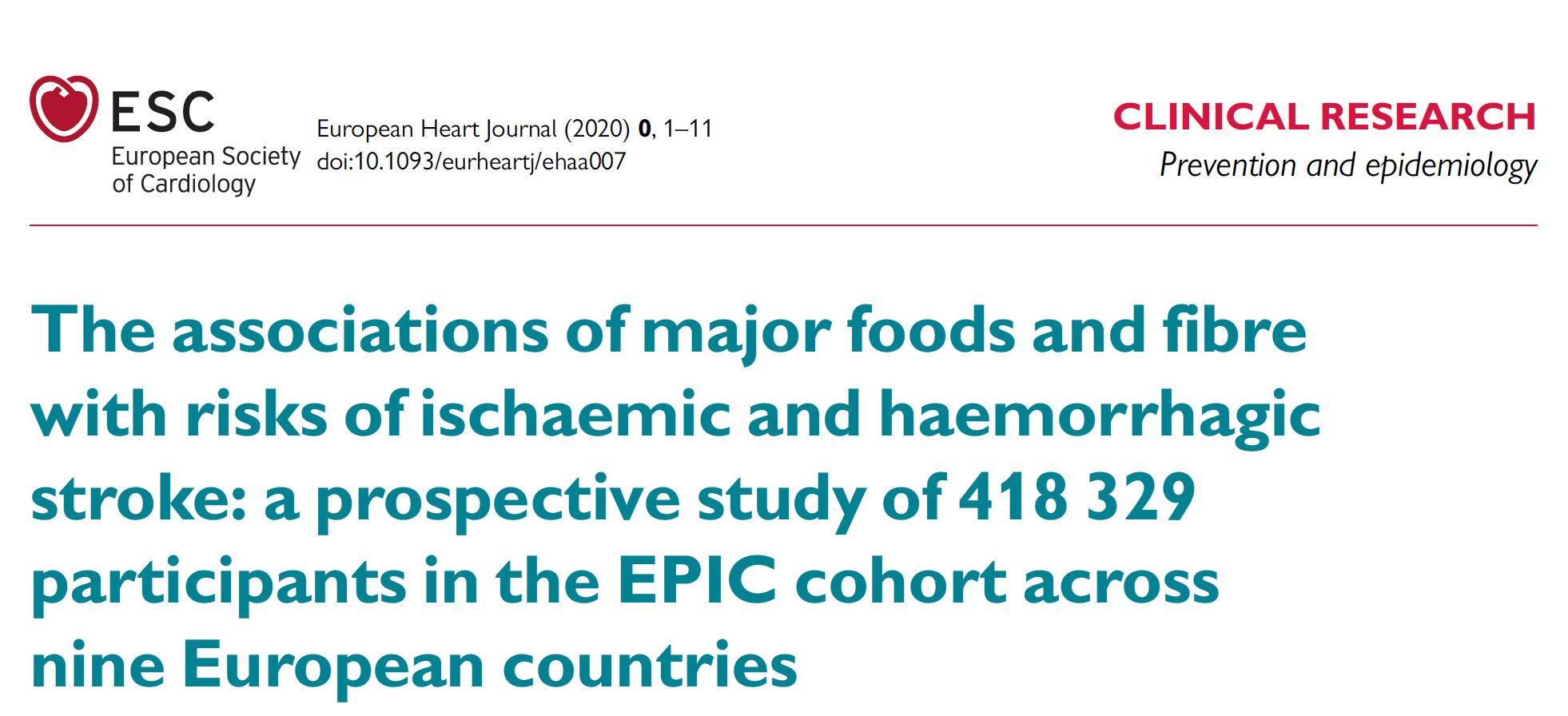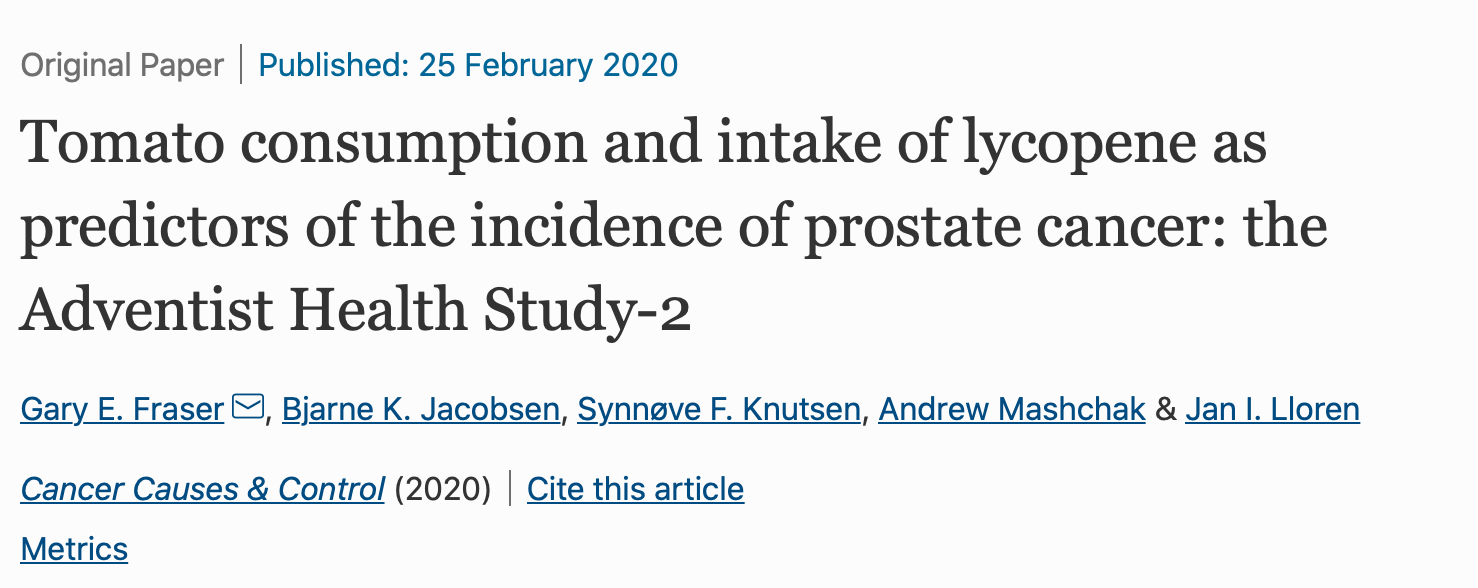A review of the week’s plant-based nutrition news 8th March 2020
The impact of diet on risk of stroke and frailty, benefits of fruit and vegetable consumption and effect of meal timings are all covered this week.
WHICH FOODS IMPACT THE RISK OF STROKE? There are two types of stroke; haemorrhagic and ischaemic. The vast majority are ischaemic and share the same risk factors as ischaemic heart disease. Stroke represents a huge burden of disease globally. The Global Burden of Disease study reported that from the age of 25 years onwards, the risk of stroke was approximately 25% among both men and women. The INTERSTROKE study, an international case-control study of about 27,000 participants, found that around 90% of stroke risk is associated with ten potentially modifiable risk factors — hypertension, smoking, diabetes, physical activity, diet (determined by the Alternative Healthy Eating Index), psychosocial factors, abdominal obesity, alcohol, cardiac causes (including atrial fibrillation, myocardial infarction), and dyslipidaemia.
The data supporting a whole food plant-based diet for prevention and treatment of stroke is not as strong as for ischaemic heart disease, partly because research into this topic has not been as extensive. Nevertheless, some broad observations can be made. Those eating more fruits and vegetables and less meat have a lower incidence of ischaemic stroke. Diet patterns that emphasise whole plant foods and minimise animal-derived foods, such as the DASH and Mediterranean diet patterns, have been associated with a lower risk of stroke.
This new paper highlighted from the EPIC study, including >400,000 participants from 9 countries with 12.7 years of follow up, reported associations of various foods with risk of both ischaemic and haemorrhagic stroke.
Foods associated with reduced risk of ischaemic stroke were fruits, vegetables, total fibre and dairy. 200g/day higher consumption of fruit and vegetables resulted in a 13% reduced risk. 10g/d higher consumption of total fibre resulted in a 23% reduced risk. Dairy consumption also reduced the risk of ischaemic stroke in the order of 5–12%.
Red and processed meats increased the risk of ischaemic stroke with 50g/day increasing the risk by 14%. However when the results were adjusted for consumption of other foods like fruits and vegetables this risk disappeared meaning that the consumption of red and processed meat reflected a lack of fruits and vegetables in the diet and a poor diet quality in general.
For haemorrhagic stroke the main food to impact risk was egg consumption, which increased the risk. 20g/day of egg increased the risk by 25%.
What could be accounting for these differences? The beneficial foods in general were associated with lower cholesterol and blood pressure, whilst the harmful foods had the opposite effect. However, the effect of fruit, vegetables and fibre consumption was beneficial even after adjusting for blood pressure levels. Fruits and vegetables are high in potassium, folate and are a source of dietary nitrates, which are beneficial for vascular health.
WHAT ABOUT VEGETARIAN DIETS AND STROKE? You will all remember the headlines from 2019 suggesting that vegetarian and vegan diets increase the risk of haemorrhagic stroke. This was based on data from the EPIC Oxford study and the first time such an association had been reported. This worried many of us that eat an exclusively plant-based diet. Suggested mechanisms included the lower LDL cholesterol and lower B12 levels in the vegetarian group. This small increased risk amounted to 3 extra cases of haemorrhagic stroke per 1000 population over 10 years. It has to be remembered though that the study showed a reduced risk of ischaemic heart disease and ischaemic stroke in the vegetarian group. This was 10 fewer cases of ischaemic heart disease per 1000 population over 10 years. So the stats still favoured a vegetarian diet over a meat-based diet.
This new study from a Taiwanese prospective cohort including >13,000 participants has reported a significant reduction in ischaemic and haemorrhagic stroke in vegetarians. Vegetarians had approx 60% reduced risk of both types of strokes. This was mainly due to lower rates of high BP and in spite of lower B12 levels. It should be noted that this cohort differed from the EPIC Oxford one in that the Taiwanese don’t smoke or drink alcohol and eat more soya foods.
TAKE HOME MESSAGES FOR DIET AND STROKE:
- The prevalence of stroke is increasing with 1 in 4 people experiencing a stroke in their lifetime.
- Ischaemic and haemorrhagic stroke are associated with different dietary factors.
- Ischaemic stroke is by far the commonest form of stroke and shares the same risk factors as ischaemic heart disease.
- Eating more dietary fibre especially from fruits and vegetables can significantly reduce the risk of ischaemic stroke with additional benefits for prevention of heart disease, cancer, type 2 diabetes etc..
- Egg consumption is not necessary in the diet and may increase risk of haemorrhagic stroke. Previous studies have also shown increased risk of heart disease and type 2 diabetes.
- Although dairy consumption was beneficial in the EPIC study, we know that it is not essential if you centre your diet around whole plant foods.
- If you are going to eat red and processed meat, keep it to a bare minimum and make sure you eat it with lots of fruits and vegetables. However, red and processed meat is best avoided and this is supported by major international guidelines.
- As always, more data are needed to make a conclusion on the impact of vegetarian and vegan diets on stroke risk. At the moment there is no definite evidence that vegetarians have an increased risk of haemorrhagic stroke and in fact a meta-analysis from 2019 did not show a negative impact of a vegetarian diet on stroke risk.
- The benefits to heart health and for ischaemic stroke far outweigh any potential increase in haemorrhagic stroke risk with a vegetarian diet.
BENEFITS OF FRUITS AND VEGETABLE CONSUMPTION IN PREGNANCY: The health benefits of fruits and vegetable consumption are immense with a dose-response — the more you eat the more benefit you get. The optimal daily number of portions of fruits and veg is probably 10, which is around 800g.
This new paper reports findings from a population-based case-control study called the Northern Ireland Baby Hearts Study. The aim of the study was to examine the impact of modifiable maternal risk factors on the risk of congenital heart disease in the baby. The study compared various social, economic, medical and psychological risk factors in 242 women whose children had congenital heart disease with 966 controls. The study found that mothers with diabetes had a 4 fold increased risk of a baby with congenital heart disease. A poor diet, low in fruits and vegetables, increased the risk of congenital heart disease by 56%. This is not the first time an association between diet and risk of congenital heart disease has been reported and in general studies have shown that higher consumption of fruits, vegetables and whole grains reduce the risk of birth complications.
TOMATOES, LYCOPENE AND PROSTATE CANCER: Prostate cancer (PC) is the second commonest cancer in men in the UK. Several studies have shown that the consumption of lycopene, the antioxidant in fruits and vegetables that gives them a red colour, is associated with a lower risk of PC. Lycopene is found in tomatoes, red peppers, watermelon, papaya, grapefruit to name a few. Tomato consumption in particular may have a protective effect, although the association is strongest for cooked rather than raw tomatoes, likely due to higher bioavailability of lycopene in cooked tomatoes. Additionally, most studies show that the protective effect occurs when there is a high level of consumption.
The study highlighed reports data from the Adventist Health Study-2, including 27934 participants and 1226 cases of PC. The results suggest higher intake — 5 or more times/week vs. rarely/never — of canned/cooked tomatoes (but not raw tomatoes) was associated with a 28% reduction in the risk of PC. The consumption of approximately 64g of tomatoes per day was associated with a 14% reduction in risk of PC. I have summarised the data on diet and prostate cancer in this additional article.
DIET QUALITY AND FRAILTY: Frailty is an increasing problem as the global population live longer. There is no magic pill but there are a number of modifiable and preventable factors, including diet. This study uses data from the Nurses’ Health Study to determine dietary factors that predict for an increased risk of fraility in older women. 71,941 women aged ≥60 years were included. Fraility was assessed using the validated FRAIL scale, which includes 5 self-reported frailty criteria: fatigue, reduced resistance, reduced aerobic capacity, having several illnesses, and a significant weight loss during the previous year. Diet was classified based on adherence to 3 healthy diet quality scores, alternate Mediterranean diet (aMED), DASH, and AHEI-2010. During more than 22 years of follow-up there were 11,564 cases of frailty. Adherence to all 3 healthy diet patterns resulted in a significant reduction in the risk of frailty in the order of 18–25% with incremental benefits with greater adherance. A 1 standard deviation increase in adherence to any of the healthy diet quality scores was associated with a 7–13% reduced risk of frailty. The common factors that appear to be beneficial in these diet patterns are lower consumption of red and processed meat, lower sodium intake, higher ratio of monounsaturated to saturated fat, vegetables, and possibly moderate alcohol intake. So, healthy diets throughout life can help prevent frailty in older age and thus improve quality of life.
WHAT IS THE BEST TIME OF DAY TO EAT: It is becoming clear that it is not only important to consider what you eat, but what time of day you eat. Your biological clock and sleep regulate how the food you eat is metabolised.
This study monitored the metabolism in a whole-room respiratory chamber of 6 subjects aged 51 -63 years. The study was a random crossover experimental design with 2 separate 56-hour sessions. In each session, lunch and dinner were given at the same times (12:30 and 17:45, respectively), but the timing of the third meal differed between the two halves of the study. In one session the additional meal was given as breakfast (8:00) whereas in the other session the additional meal was given in the evening (22:00). The additional meal was nutritionally equivalent and the duration of the overnight fast was the same for both sessions. The results demonstrated that skipping breakfast and eating late at night resulted in less fat burn, with carbohydrates being metabolised in preference, when compared to the session with breakfast. The implication of this is that over time, late night eating will lead to increased fat storage and increase the risk of metabolic syndrome. This study reinforces the old saying ‘eat breakfast like a king, lunch as a prince and dinner like pauper’. If you are practicing intermittent fasting then best to finish eating earlier in the day rather than later.
For more tips on weight loss I suggest reading ‘How not to Diet’ by Dr Michael Greger. It is a tough read, more so than ‘How not to Die’, but it is the most comprehensive book on optimising weight loss I suspect you will ever read!
If you have found this article useful, please follow my organisation ‘plant-based health professionals UK’ on Instagram @plantbasedhealthprofessionals and facebook. You can support our work by joining as a member or making a donation via the website






